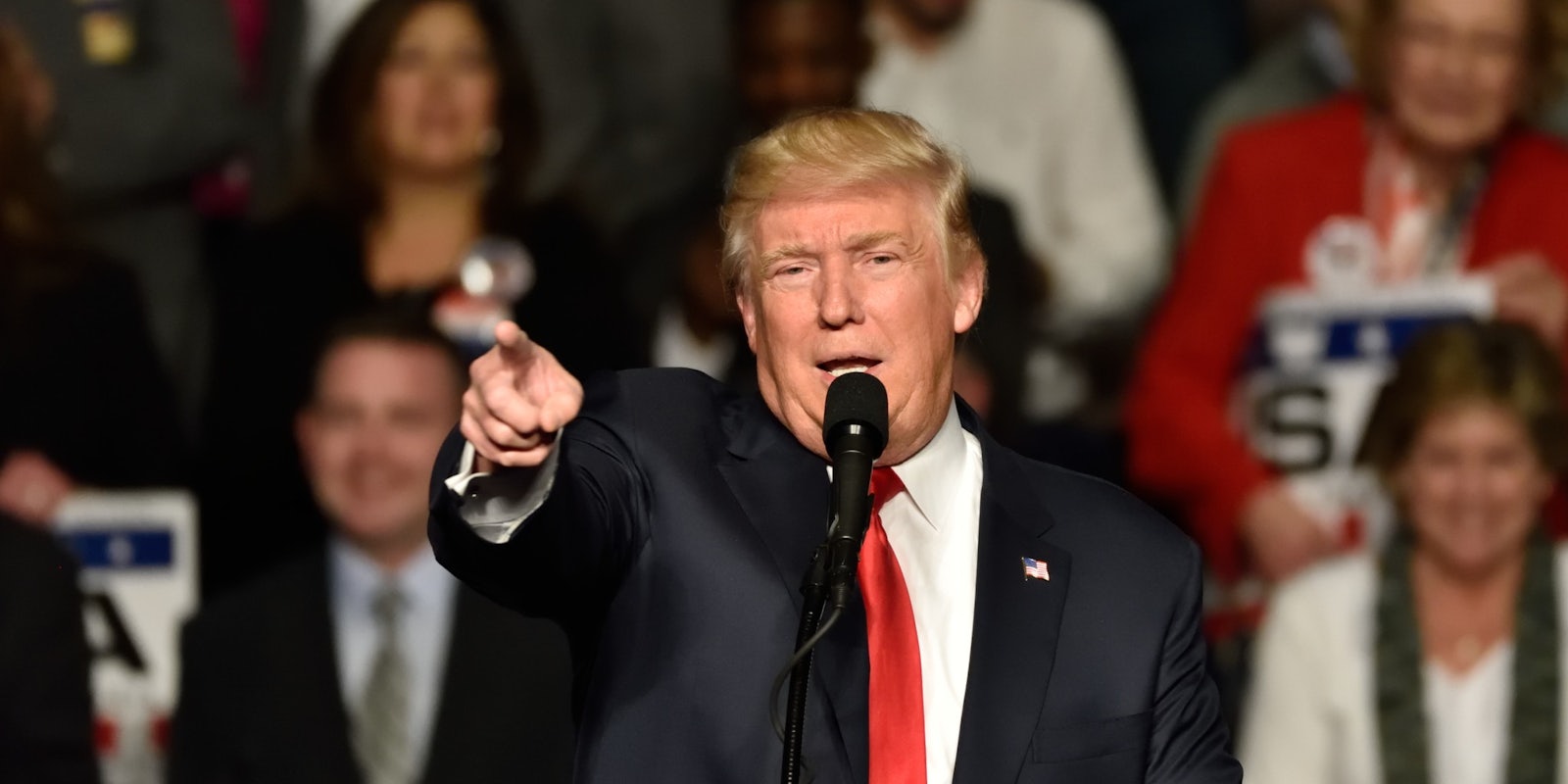President-elect Donald Trump wants you to think he’s more popular than all the latest polls say he is.
In what can now be described as a typical Trump response to negative information about him, the president-elect on Tuesday morning claimed that polls showing his favorability rating at historic lows are “rigged.”
“The same people who did the phony election polls, and were so wrong, are now doing approval rating polls,” Trump tweeted. “They are rigged just like before.”
Trump’s claim follows the release of at least three new national polls that found the incoming president with favorability ratings far below any of his recent predecessors.
A Gallup poll released Monday found 55 percent of Americans held an unfavorable of Trump—the lowest of any president pre-inauguration since 1993, when the firm first polled Americans on this question—compared to 40 percent who held a favorable view.
An ABC/Washington Post poll similarly found 40 percent held a favorable view of Trump, the lowest of the last seven incoming presidents. (George W. Bush was second to Trump, with a 56 percent approval rating, while Obama had the highest at 79 percent.) Trump’s unfavorability rating is 54 percent in this poll.
Finally, a CNN/ORC poll found Trump’s approval/disapproval rating at 40 percent to 52 percent. This puts his approval rating 44 points behind where President Barack Obama was before he took office in 2008.
Each of the three polls above surveyed approximately 1,000 Americans, and the margins of error range from 3 percent to 4 percent.
Now, about those election polls Trump says were rigged. First, it must be noted, Trump lost the national popular vote by more than 2.86 million votes, or 2.1 percent—exactly the average number by which Trump trailed Democrat Hillary Clinton at the end of the 2016 polling cycle. Trump won the election by winning in key states that gave him the Electoral College advantage, which is how the U.S. system decides its presidents.
Second, Trump regularly touted polls on the campaign trail when they were in his favor.
As with Trump’s victory, it is at the state level where the polls erred the most. Trump arguably won thanks to a total of just under 80,000 votes across Wisconsin, Pennsylvania, and Michigan—three states where Clinton was expected to win. A Washington Post analysis found that the polls in Wisconsin were seven points behind that state’s popular vote and three points behind the popular votes in both Pennsylvania and Michigan.
So, the polls were wrong in some key states but accurate nationally. This combination created a media environment in which pundits and prediction models gave the perception that Clinton would beat Trump, which obviously turned out to be incorrect. In the case of this week’s favorability polls, all of them put Trump’s favorability at 40 percent and his unfavorability at between 52 and 55 percent. Even if these numbers are off by, say, 10 points, Trump would still be historically unpopular.

